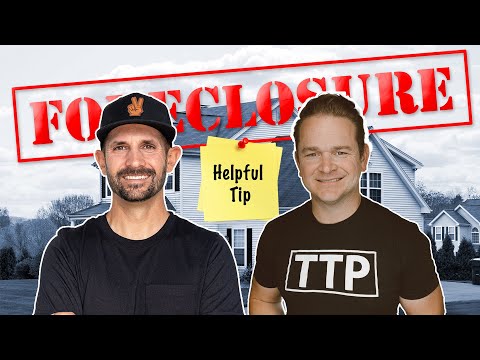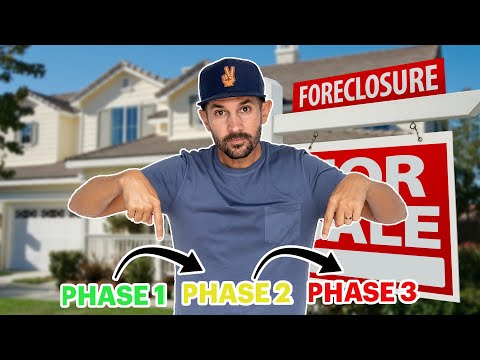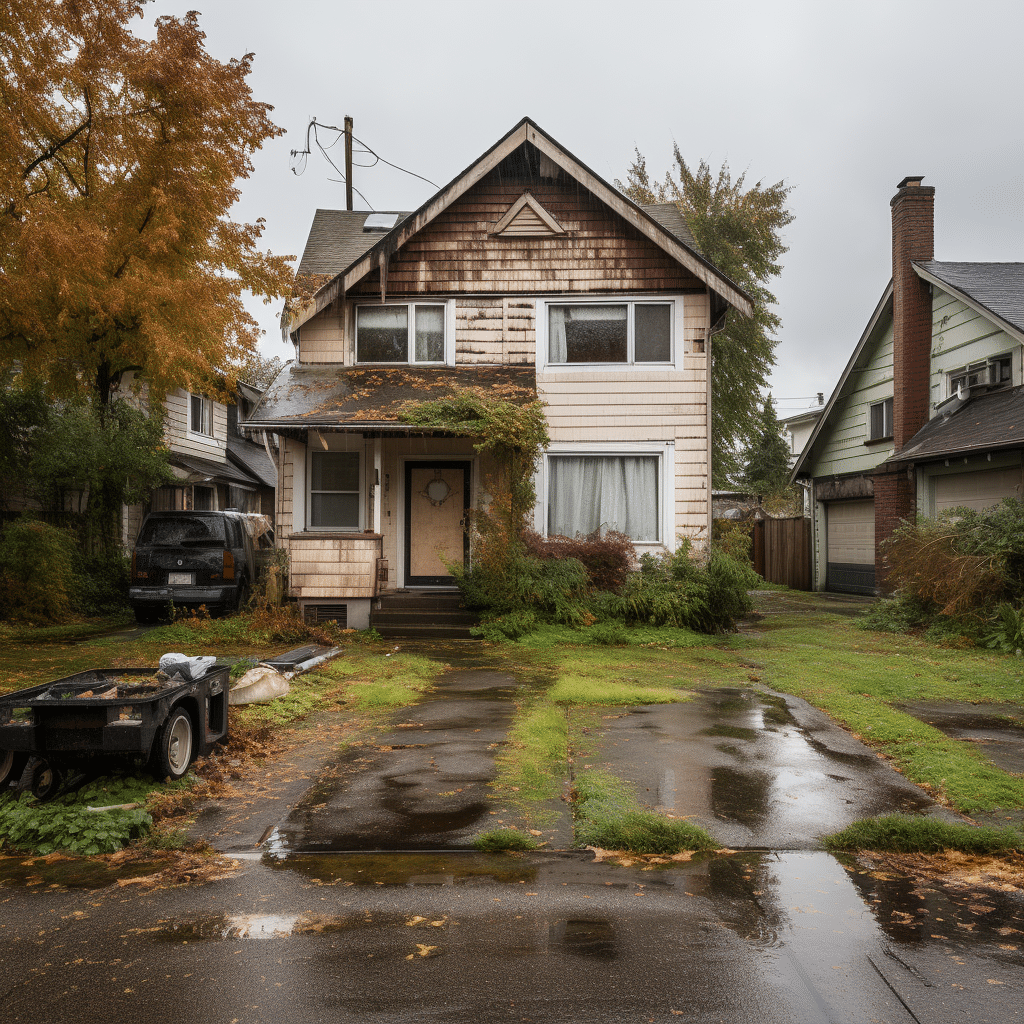In the evolving world of real estate, the notion of pre-foreclosure has undergone significant transformations. We’ve witnessed tweaks in federal regulations, changing market conditions, and a tidal wave of technological advancement making the process less burdensome than what it was a decade ago. As we navigate through the maze of pre-foreclosure in 2024, there are some critical changes you need to be apprised of. So, buckle up as we journey through the whirlwind of these key updates, unraveling their impact, and providing practical tips to take advantage of them effectively.
Understanding Pre-foreclosure: The Meaning and Process
To begin with, let’s get a grip on what pre-foreclosure entails. It’s the first step in a foreclosure process when the lender issues a notice of default to the borrower, putting the homeowner on the clock to either resolve the debt or negotiate a short sale. It doesn’t affect credit scores as much as a final foreclosure, but it’s a situation most homeowners try to avoid.
The process usually kicks off when the borrower misses about three monthly payments, a trigger point commonly referred to as technical default. From here, there’s a 120-day window before things can start getting legally messy. However, many homeowners can avert this scenario if they act promptly and negotiate with the lender.
Now that you’ve got your footing in the pre-foreclosure landscape, let’s dive into the quintessential changes that the year 2024 has brought along.

Recognizing the Five Key Changes in Pre-Foreclosure in 2024
The face of pre-foreclosure has seen some remarkable transformations in 2024, owing to these five main factors.
Revised Federal regulations: Our lawmakers are continually tweaking the legislations to make the process more homeowner-friendly. These adjustments have made the process more transparent, giving borrowers adequate safeguarding provisions.
State-specific legislation: Specific states have made some impressive strides, like California. In a bid to promote homeownership, the state law has created exceptions to the rule that a foreclosure sale is final upon the acceptance of the highest public auction bid.
Changing market conditions: The real estate market is as dynamic as ever. Current trends indicate a bullish market for foreclosed properties, providing golden opportunities for shrewd investors.
Influence of technology: Tech has proven to be a game-changer across many sectors, and real estate’s no exception. We’ve seen an influx of platforms housing pre-foreclosure listings, making it relatively easy to identify these properties.
Community response and resources: The increasing availability of resources, both online and offline, is helping potential buyers and sellers in the pre-foreclosure marketplace make educated decisions.

| Subject | Information |
|---|---|
| Definition | Pre-foreclosure is the warning phase in the foreclosure process, indicating that the borrower is defaulting on loan payments. |
| Impact on Credit Score | Pre-foreclosure itself won’t drastically damage a credit score. However, if it progresses to a complete foreclosure, the impact will be significantly detrimental. |
| Foreclosure Timeline | The foreclosure process cannot legally start until 120 days after missing a mortgage payment. In California, lenders typically start the process after the third missed payment (90+ days). |
| Homeowner Opportunities | During the Pre-foreclosure phase, homeowners can negotiate with the lender to avoid foreclosure. This could include loan modification or short sale. |
| Legal Framework | In California, the 2020 law facilitates homeownership by creating exceptions to prior foreclosure laws. The new law delays the final sale of a foreclosure until after the highest bid is accepted at a public auction. |
| Recommendations | If having trouble with mortgage payments, act promptly in the pre-foreclosure phase to avoid drastic credit score impacts and potential loss of property. |
Decoding Pre-foreclosure Listings: How to Identify and Use Them
Pre-foreclosure listings, with a little bit of understanding, can indeed be your golden goose. These lists provide essential data regarding the financial situation of the homeowner, the property’s assessed value, and how much is owed. Accessing such pre-foreclosure listings in today’s tech-driven world isn’t a task. Platforms like “real estate questions” have a plethora of such resources readily available, making it simpler to filter through properties that fall under the pre-foreclosure bracket.

Exclusive Insight into Pre-Foreclosure Homes: Essentials and Tips
With changes hovering around pre-foreclosure homes in 2024, here are some unique characteristics:
Pre-foreclosure homes could be physically worn-out owing to financial constraints faced by prior residents. However, they still make a great bargain buy for the right investor ready to undertake some restoration job.
They enable easier negotiation as the homeowner would be keen to ward off a full-fledged foreclosure.
Tips for dealing with these homes include acting swiftly as soon as they hit the pre-foreclosure listings, lining up your finance, and keeping aside some funds for potential renovations. You can also explore resources like “short sale homes” to grasp some practical advice.

Zero-Down Buying: How to Buy Foreclosed Homes With No Money
Zero-down purchasing, though a firm favorite in the realtor circle, does come with its fine-print. Only specific cases are eligible, and even these require a proper understanding of how to buy foreclosed homes with no money to avoid falling into a debt pit.
Here are some strategies to seal the deal with zero money:
Remember, while these strategies seem attractive, they do demand a realistic assessment of your fiscal endurance.
Pre-Foreclosure and Preforeclosure: Is There a Difference?
Simply put, no. Pre-foreclosure and preforeclosure are similar terms tossed around in the real estate parlance, the only difference being a hyphen. They refer to the stage where homeowners have defaulted on their loan but have a window to rectify the situation before heading for full-fledged foreclosure.

Making Sense of The Pre-Foreclosure Maze: Understanding What Pre-Foreclosure Means
Pre-foreclosure is more than just a technical default or a notice of default. It represents a period of opportunities and challenges alike for homeowners and potential investors. It opens up a window of negotiation and restructuring for the borrower, while investors can grab quality assets at bargain prices. Gear up by having your “fast and furious cast” of real estate and finance experts with you.
2024 Vision: What is Pre Foreclosure in the Current Year and Beyond?
In the context of 2024, pre-foreclosure aligns more with opportunity than despair. With technology and regulatory changes shaping this space, sellers have a better shot at avoiding full foreclosure, while investors can score a big bargain.
As we gaze into the future, we can expect continuous policy modifications and technological advancements to further optimize the pre-foreclosure landscape, making it less stressful and more rewarding for all parties involved.
Unpacking the Subtleties of Pre-Foreclosure: Demystifying What is Pre-Foreclosure
Delving deeper into pre-foreclosure, the most critical part is being aware of the impending foreclosure well ahead. It’s about making use of this window of opportunity to either remedy the situation or walk away with a minimal blow to your credit score. Though cast under the dark shadow of foreclosure, pre-foreclosure does have its light at the end of the tunnel if maneuvered wisely.
Key Takeaways and Forward-Looking Perspectives
As we round up this journey through the labyrinth of pre-foreclosure, here’s a snapshot of the takeaways:
As we look ahead, transforming your pre-foreclosure stance from a reactive one to a proactive one can make a world of difference. As told by the “firefly lane season 2”, it’s not always about the problem – it’s how you handle it that defines you.
Remember, pre-foreclosure is not the end of the world. It’s just a chapter in your real estate saga, a chapter that, when managed wisely, can lead you to more prosperous sequels in your journey!
That’s all folks! Here’s to navigating through the pre-foreclosure waters of 2024 and beyond with confidence and acumen.
Does pre foreclosure affect credit score?
Well, folks, pre-foreclosure can indeed ding your credit score. This happens because missed payments are typically the catalyst for pre-foreclosure, and these get reported to credit bureaus. Blimey! That’s going to leave quite a mark on your credit report.
How many missed payments before foreclosure in California?
Before a foreclosure in sunny California, you typically have to miss around four payments. In layman’s terms, you’re granted a grace period of about 120 days after you’ve started dropping the ball on mortgage payments.
How long can you default on mortgage before foreclosure?
Now, here’s the scoop. Typically, you can default on your mortgage for about 120 to 180 days before foreclosure gets put on the table. Mind that this period can vary, especially if you’re negotiating with your lender.
What is the new foreclosure law for California?
As we roll into the New Year, Cali’s new foreclosure law gears towards more protection for borrowers. Starting 2023, lenders must contact a distressed homeowner 30 days before filing a Notice of Default, giving you time to get your ducks in a row.
Can I rebuild credit after foreclosure?
Can you rebuild credit after foreclosure? Absolutely! Rebuilding credit after foreclosure is doable, friends. It’s a twisty-turny road that involves a consistent record of on-time payments, low credit utilization, and time. Patience is virtue, remember?
Can you fix your credit after foreclosure?
And, yes, darlings, you can fix your credit post-foreclosure. Start by making timely payments, dropping your credit utilization, and frankly, just playing your cards right. It might feel like you’re climbing a mountain, but it’s possible!
How long can a house be in pre foreclosure California?
In California, a house can be in pre-foreclosure as long as 120 days, a four-month period known as “pre-foreclosure.” This is when the homeowner needs to whip up a plan to either pay the owed debt or sell the house.
How long does pre foreclosure take in California?
Pre-foreclosure in California typically takes about four months. After you miss a payment, it’s a 30-day countdown to the lender getting in touch. But, the real action doesn’t start until after the fourth missed payment.
How long can you not pay your mortgage before foreclosure in California?
Not paying your mortgage in California can get you about 120 days to 180 days before foreclosure waves hello. So, if you’re in a pickle, you’ve got about 4 to 6 months to sort things out.
How many months can you not pay mortgage?
Regardless of the Big Bear state or the Sunshine State, you typically have about three to four months (or missed payments) before the foreclosure process commences.
What happens if you are 3 months behind on your mortgage?
Being three months behind on your mortgage isn’t a walk in the park. Typically, your lender will file a Notice of Default. This signals, loud and clear, the start of the foreclosure process.
How can I avoid foreclosure?
Avoiding a foreclosure? It’s all about proactive communication with your lender, considering refinancing, or exploring a loan modification. You may also consider selling your house, but make sure to weigh the pro and cons first.
How does pre foreclosure work in California?
Pre-foreclosure in California starts after about four missed payments. Your lender will send a Notice of Default, giving you 90 days to bring your account current. If it stays unpaid, the foreclosure process begins.
What are the new foreclosure law in California 2023?
In 2023, the new foreclosure law in California demands lenders to reach out to homeowners 30 days before filing a Notice of Default. This aims to give you an extra moment to bounce back.
Are foreclosures increasing in California 2023?
As we prepare to ring in 2023, it’s still unclear whether foreclosures in California will increase. Predictions might be murky, but staying informed and prepared is a smart move!
How much does a foreclosure drop your credit score?
A foreclosure could cause your credit score to take a steep dive and drop as much as 100 to 150 points. But hey, that’s not set in stone. Your starting score and how you handle other credit obligations can sway things.
How long will a foreclosure affect my FICO score?
The shadow of a foreclosure on your FICO score can last for up to seven years. It’s quite a stretch, isn’t it? But remember, the impact tends to decrease over time.
Why isn’t my foreclosure on my credit report?
Curious why your foreclosure isn’t appearing on your credit report? It’s likely it hasn’t been reported by your lender, or it’s an error on the credit bureaus’ part. Sometimes, even a bit of good old-fashioned luck plays a part.
What is the downside of a foreclosure?
The downside of foreclosure…well, where do I start? It can seriously tank your credit score, linger on your credit report for seven years and, let’s be honest, make future mortgage applications a tougher sell.



